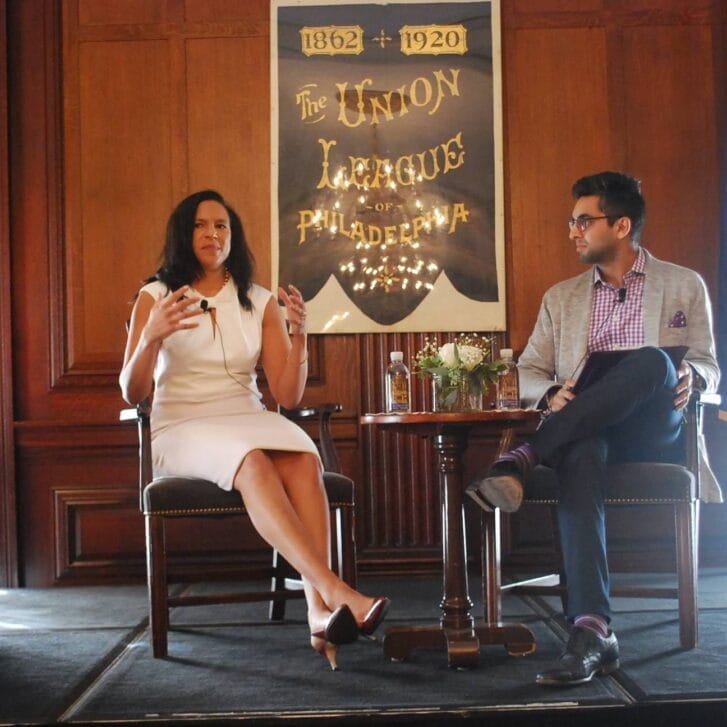If you’re a recent Wharton graduate–or even if you got your MBA years ago–you likely took a job in banking or consulting right out of school, but it’s never too late to shift gears. If you know someone at Wharton currently, this advice is for them, too: seriously consider becoming a brand manager in the Consumer Packaged Goods (CPG) industry. Regardless of how they get there, more MBAs should pursue a career in CPG. Why? Because it provides corporate leaders the chance to become the best they can be.
For all of CPG’s success creating renowned brands, the industry has trouble attracting today’s best MBA talent. Yet CPG –and the work of its marketers, or “brand managers”–is ever-present: when we rip open a breakfast bar while commuting to work, throw a detergent pod in the washing machine, or crack open a can of seltzer when trying to quit soda (though brand managers of flagship cola brands are trying to lure us back).
The irony is that there is a strong case for a brand management career right out of business school. One distinction is the speed with which assistant brand managers (ABMs) are given responsibility; an ABM is essentially the CEO of their brand from day one. In the first two years, companies train ABMs to become a general manager of a business. They learn how to manage profit and loss; take the panoramic measure of a business quickly; combine analytical rigor with creative panache; and safeguard, stretch, and revitalize celebrated brands that fulfill their promise to consumers.
If leadership potential doesn’t inspire you, what about the outsized effect brand managers have? Anytime your favorite brand makes a major change–your aftershave no longer has parabens, there’s a new flavor of your guilty-pleasure chocolate bar, your detergent removed a chemical known to hurt fish, or your yogurt is now supporting Breast Cancer Awareness Month—that’s the work of brand managers. They shape everything about how our favorite products are sourced, produced, feel, smell, taste, and work.
Of course, brand managers can’t do it all alone. They rely on a team of experts from every department–operations, finance, sales, research, quality assurance, manufacturing, and design. Because ABMs lead such diverse project teams, they must exercise four key pillars of leadership consistently: vision, strategy, execution, and reflection. ABMs have to elucidate a crystal-clear vision, something akin to: Through market research, we found over 30 percent of our target consumers are shifting to low-sugar, multigrain alternatives, all of which are currently made by small, upstart brands. We should launch a wholegrain cereal line to better serve core consumers and regain lost market share. How the team accomplishes that vision—the scope, scale, process, and effect—is the strategy. Execution includes the product’s testing, mass production, and ad campaign. After the campaign launches, there will be an after-action report on things that could have gone more smoothly; that’s reflection.
Naturally, CPG is not without its downsides. Many CPG products are not necessarily good for the environment or us: sugary cereal (hence the wholegrain cereal example above), high-sodium soup (which two famous brands fought about in public view), antibacterial soap (on which the FDA had to weigh in). That said, consumers have become judicious label readers and some heritage brands are ahead of the curve, re-designing products to fit emerging research. Still, brand managers often navigate situations where doing the “right” thing (e.g., using better ingredients) meets enormous cost, sourcing, or even senior leadership roadblocks. To be fair, such dilemmas exist in many professions, and how we handle them sometimes shows us what we’re made of.
The industry tends to be hierarchical. After joining a blue chip CPG company, ABMs usually face a four- to five-year wait for promotion to the coveted brand manager role. This leap is the Holy Grail for most ABMs but, once attained, it will be another four- to five years before advancement to the director level. This phase is a time of high attrition; ABMs commonly switch companies or leave CPG altogether. But since ABMs are learning an incredible amount at breakneck speed, it’s plausible for them to jump ship to a CPG company that’s a better fit. In one crucial regard, an ABM is much like an associate at a large investment bank: after spending a couple years with a firm, they are well positioned for nearly any marketing role in any industry, CPG or otherwise.
Obviously, how much any MBA values salary and growth depends on personal and professional goals, but these are serious considerations for young graduates (or anyone with crushing student loan debt). Those caveats aside, no two days are alike for a brand manager and, with a clear vision for where they want to go, they have no shortage of opportunities. Choosing the CPG industry means more than becoming just a marketer–it means thriving on inspiring a team, understanding (and ideally believing in) a brand’s promise, and finding creative ways to deliver it.
Picture this: You’re in the chips section of a grocery store. You pick up a bag with a beautifully backlit picture of a bowl of chips in different shades of orange and red. Below the logo, it says, “Contains 10 essential nutrients and 40 percent less fat than regular chips!” Intrigued, you turn the bag over and read: “From the beginning, we at Sierra believed in crafting a better chip. Because you deserve it. Using only the finest root vegetables like organic parsnips, beet, turnips, and carrots, we lovingly ensure that each and every bag of Sierra is packed with flavor, crunch, and goodness. From our home to yours, we hope Sierra takes you on a journey of enlightened snacking.”
How can you disagree with anything on that package? You put it in your cart and continue shopping, feeling pleased that you’ve embraced a superior snack experience.
Somewhere in Sierra’s corporate offices, a brand manager just got their wings.


























